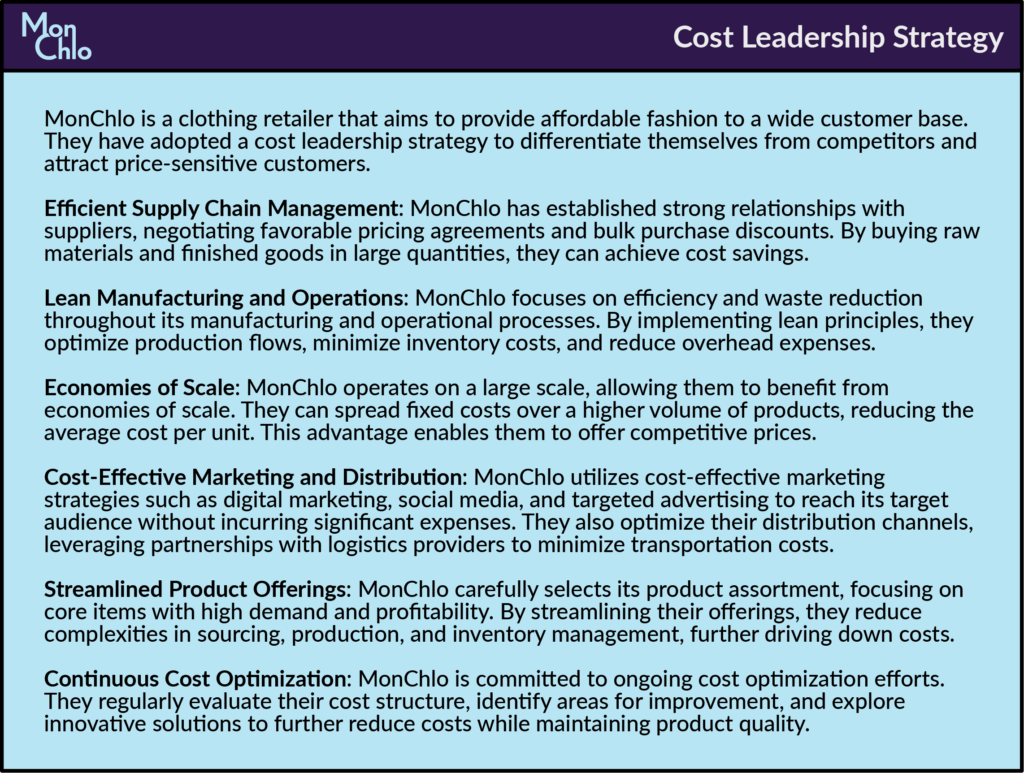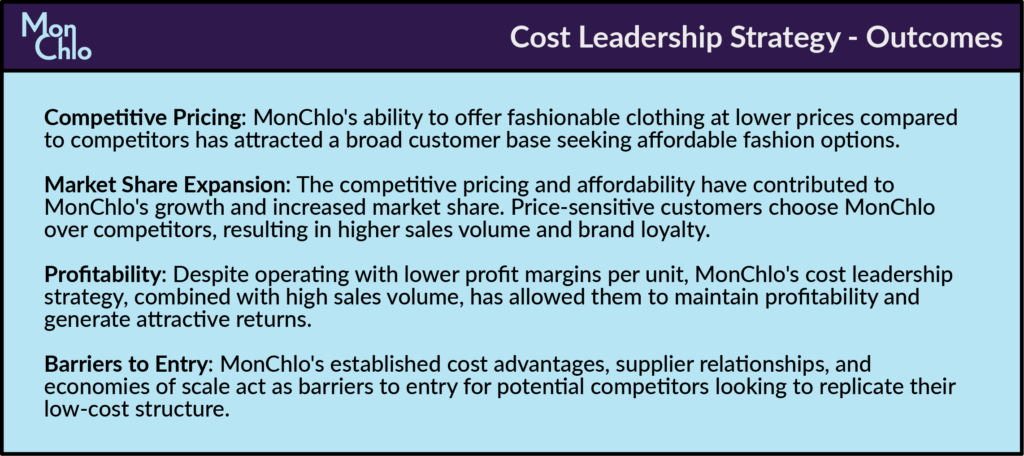Cost Leadership Strategy
Cost Leadership strategy is a competitive approach where a company aims to achieve the lowest cost of production or operation within its industry while maintaining acceptable quality standards. The primary goal of this strategy is to offer products or services at a lower price compared to competitors, thus gaining a competitive advantage.
Cost leadership strategy is closely connected to competitive strategies as it is one of the fundamental approaches identified by Michael Porter in his book “Competitive Strategy: Techniques for Analyzing Industries and Competitors.” Porter describes cost leadership as one of the generic strategies that companies can adopt to gain a sustainable competitive advantage.
The key principles and benefits of cost leadership strategy are as follows:

- Cost Efficiency: Organizations following this strategy focus on optimizing their internal processes, supply chain management, and operational efficiency to reduce costs at every level of their operations. This may involve streamlining production processes, negotiating favourable supplier contracts, implementing lean manufacturing practices, or adopting cost-saving technologies.
- Price Competitiveness: By keeping costs low, companies can offer their products or services at more affordable prices than their competitors. This competitive pricing can attract price-sensitive customers who prioritize cost savings.
- Market Share Expansion: Lower prices and cost advantages can help companies gain a larger market share by attracting customers who are price-conscious and seeking affordable options. This can lead to increased sales volume and revenue.
- Profitability: Although cost leadership focuses on offering lower prices, the strategy aims to achieve profitability through high sales volume and economies of scale. By maintaining a cost advantage over competitors, companies can still generate profits despite operating with lower profit margins per unit.
- Competitive Barriers: Implementing a successful cost leadership strategy can create barriers to entry for potential competitors. New entrants may find it challenging to replicate the cost advantages, supplier relationships, or production efficiencies established by companies already operating with a low-cost structure.
It’s important to note that cost leadership strategy does not mean compromising on quality. Successful implementation requires balancing cost efficiencies with maintaining acceptable quality levels to meet customer expectations. Organizations pursuing this strategy must continuously monitor and improve their cost structures, stay ahead of industry trends, and seek opportunities for cost reductions while delivering value to customers.
Case Study: MonChlo and Cost Leadership Strategy
Let’s create a case study using our fictional company MonChlo to illustrate the implementation of a cost leadership strategy.

Results: MonChlo’s cost leadership strategy has yielded several positive outcomes:

Conclusion: MonChlo’s implementation of a cost leadership strategy has positioned them as a prominent player in the affordable fashion market. By effectively managing costs, optimizing operations, and offering competitive prices, they have gained a competitive advantage and fostered customer loyalty. This case study demonstrates how MonChlo’s commitment to cost leadership has contributed to their success in delivering affordable fashion while maintaining profitability.